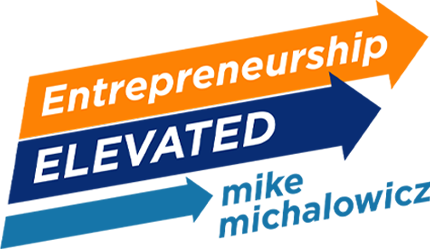 “It’s not you, it’s me.”
“It’s not you, it’s me.”
You may have heard that from an ex, but if you own a business, you may have heard it from an employee. And I hate to break it to you, but when your employees leave, you likely have something to do with it.
The market is demanding a new kind of leader. You have post-pandemic Quiet Quitting, the Great Resignation, and back-to-the-office conundrums. Maybe these issues will pass for now, but they’re not new trends, and they will cycle back frequently.
The Leadership Problem: Lessons from Steve Jobs and Elon Musk
When employees don’t feel ok with their jobs, your business and your revenue won’t be ok either. Psychology Today published an article this past March about this very topic (you can access the article here). The Cliff’s Notes version: Steve Jobs and Elon Musk – very successful in creating revenue, but not so successful in maintaining a sound workforce. From massive layoffs to tyrannical leadership, both leaders had/have the reputation for leading with fear and treating people like a number, cracking the foundation of their businesses.
Important note to remember in your leadership journey
No matter how big or small your business, your employees who don’t have job satisfaction do have the power to pull the rug out from even the biggest, baddest businesses (say that one five times fast).
The leadership fix
“Ok, Mike, we get it, leaders have to make some changes.” But it’s not that easy. The problem? Leaders need a road map to navigate this new terrain or risk losing employees who support the business and its revenue. But in this new age of leadership, how do we address the needs of the workforce without leaders putting their necks out too much?
The FASO model
The FASO model is a system I created to help business owners hire and retain the best skilled and talented people to enhance business. People who will become committed and loyal employees, who feel agency and ownership in their jobs, which ultimately increases revenue. Last week’s blog explained S for “safety”. This week, let’s look at A for “ability”. (Promise the rest of the FASO model will be explained over the next weeks!)
A is for Ability
Great leaders know that assessing whether a person has what it takes to work for your company is far more than their references and résumé. Hiring based on experience and education is limiting—for your team, and for your company’s growth. Résumés and references point to a candidate’s experience, but give few insights into ability, potential, character, values, and a list of intangibles. You want to hire people for the stuff that is baked into them, the stuff that can’t be trained.
Over the last few years, my company began hiring based on curiosity, shared values, and their ability to successfully do the job they were hired for, but they also have the ability to be nimble when needed. And look around, it’s usually needed.
You want to avoid the massive disruption and loss of resources when someone quits. That starts with your recruiting process. Here are three ideas to consider from All In to get you going:
- Rather than match a person’s qualifications to a role, consider a person’s innate, experiential, and potential abilities.
- People who want to do a job always outperform people who need to do a job. Seek the want. The desire. The thirst.
- Your top talent will be revealed when you see how well they do the work they select and optimize for themselves. When employees do work that is a fit to their ability they have safety and ownership in the work they do. They fit snuggly into the FASO Model. And when that happens, A-player-ship is revealed. Automatically.
Get with the times
A modern approach to finding your best performers is to put potential ability on equal footing with talent assessments. Every human being has unexplored potential. Every single one of us. The question is, does a person have an alignment of potential ability, existing strengths, and immediately needed skills that match the needs you have for the job and expectations? And can your business further amplify those strengths and give your employees new skills so that they perform at the highest level? Are you willing and able to afford the time to develop that person’s potential? Are you the leader who commits to helping each employee become their greatest self?
There’s so much more to this, but I wanted to get you started in thinking about your team. When you recruit, do you consider the potential abilities of your candidates? Once hired, are you nimble enough to align roles according to your employees’ abilities? Ask yourself those questions, and if you’re not sure, stay tuned to make sure you have the blueprint you need to make your team, and your company, the best it can be.
Wishing you health and wealth always.
-Mike
PS – You can preorder All In now so you’re ready for the new year! Available for preorder on Amazon and other booksellers.










